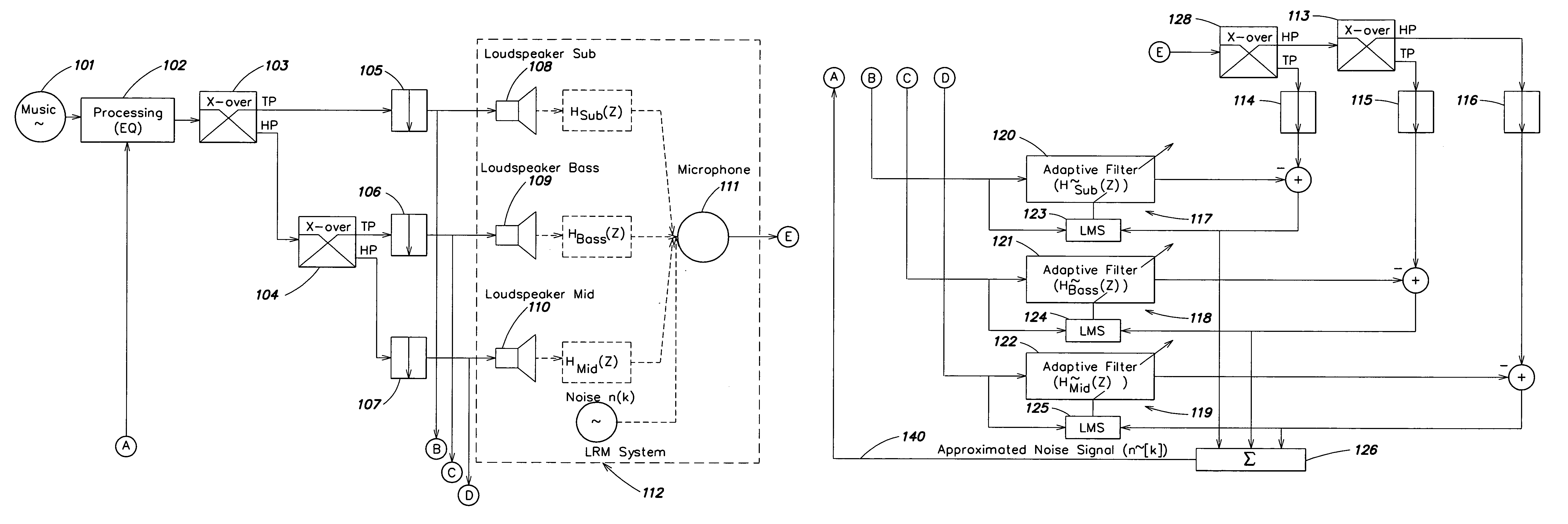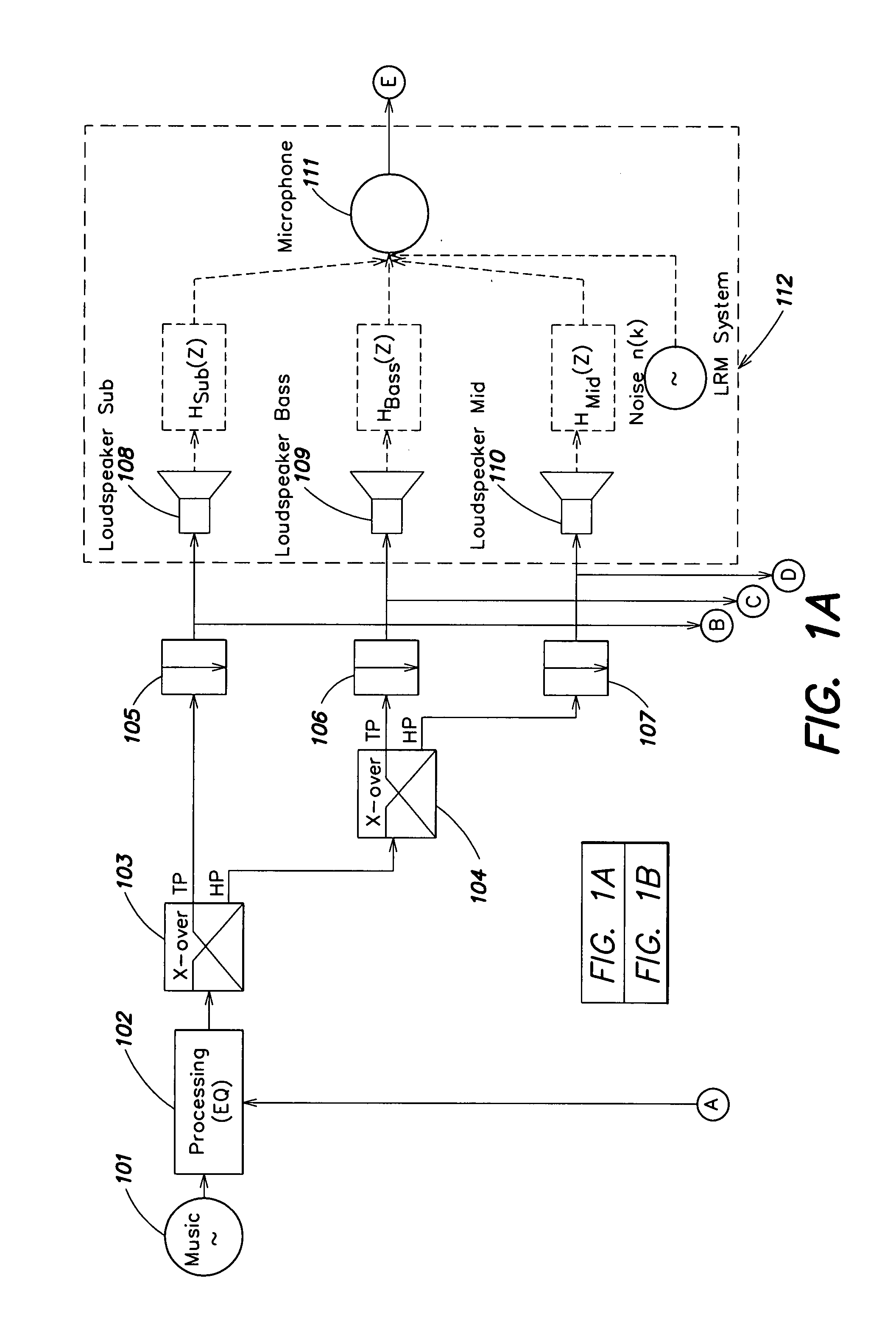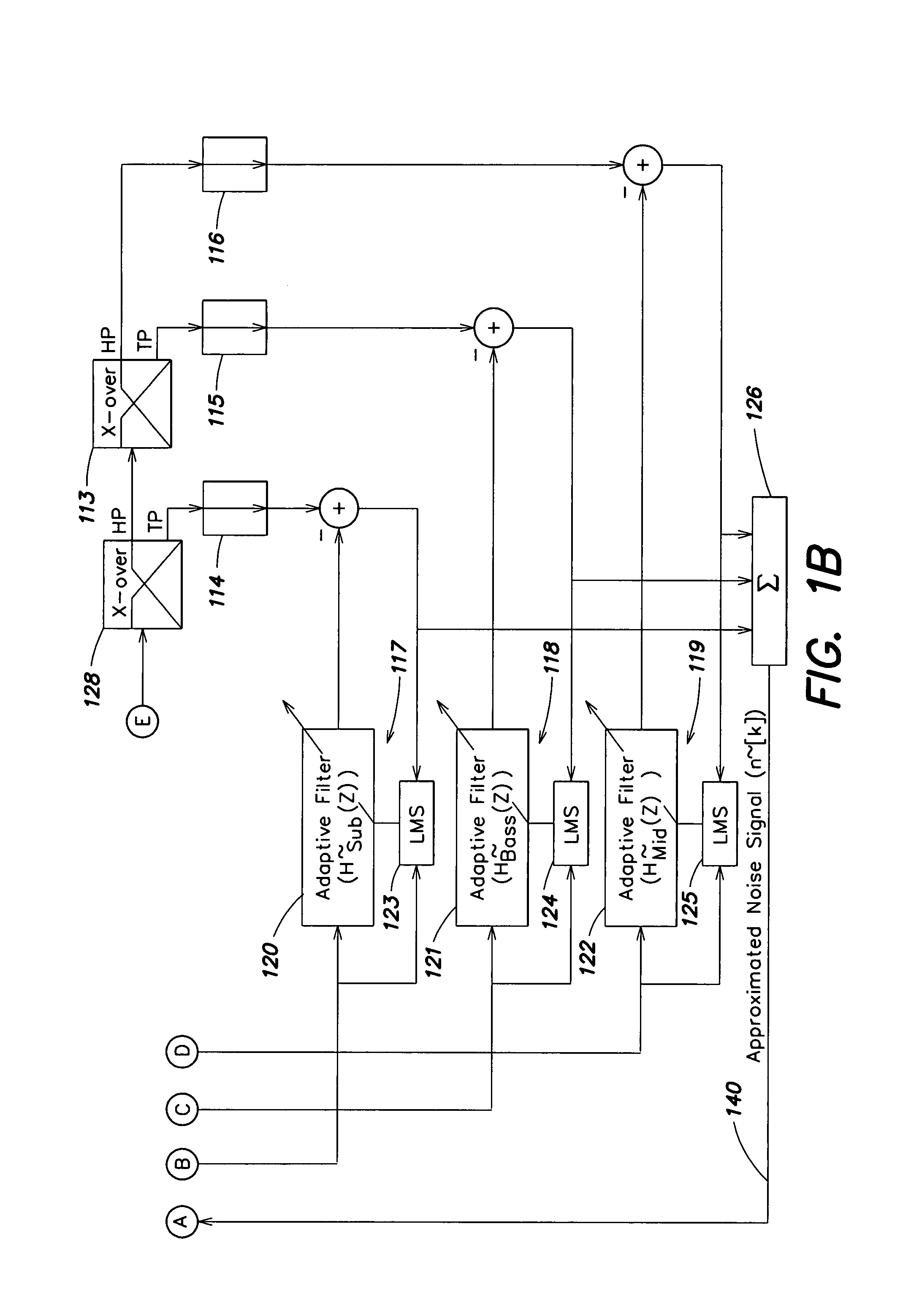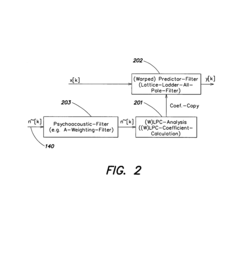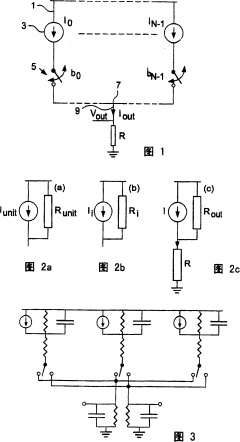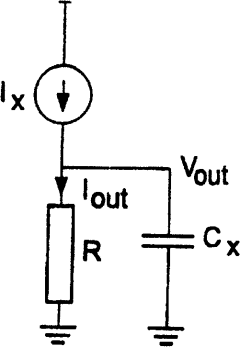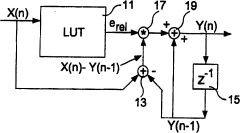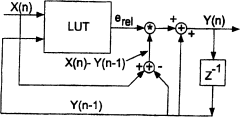Influences of LDAC in Precision Audio Environments
JUL 4, 20259 MIN READ
Generate Your Research Report Instantly with AI Agent
Patsnap Eureka helps you evaluate technical feasibility & market potential.
LDAC Technology Evolution and Objectives
LDAC (Low Latency Audio Codec) technology has undergone significant evolution since its introduction by Sony in 2015. Initially developed to address the limitations of existing Bluetooth audio codecs, LDAC aimed to provide high-resolution audio transmission over Bluetooth connections. The primary objective was to deliver near-lossless audio quality while maintaining low latency and efficient power consumption.
The evolution of LDAC technology has been driven by the increasing demand for high-fidelity audio in wireless devices. As consumer expectations for audio quality in portable devices grew, LDAC emerged as a solution to bridge the gap between wired and wireless audio performance. The technology's development has focused on improving data transfer rates, reducing latency, and enhancing overall audio quality.
One of the key milestones in LDAC's evolution was its adoption by the Bluetooth Special Interest Group (SIG) in 2017. This integration into the Bluetooth standard significantly expanded LDAC's reach and potential impact on the audio industry. Subsequently, LDAC has been continuously refined to support higher bit rates and improve compatibility across a wider range of devices.
The objectives of LDAC technology in precision audio environments are multifaceted. Primarily, it aims to provide a wireless audio solution that can rival the quality of wired connections, particularly in professional and audiophile settings. This includes achieving bit rates of up to 990 kbps, which is substantially higher than conventional Bluetooth codecs, allowing for the transmission of high-resolution audio files without significant loss in quality.
Another critical objective is to minimize latency, which is crucial in precision audio environments where timing and synchronization are paramount. LDAC strives to maintain low latency while preserving audio quality, addressing a common challenge in wireless audio transmission.
Furthermore, LDAC technology aims to optimize power consumption, recognizing the importance of battery life in portable devices. This objective involves balancing high-quality audio transmission with efficient energy use, ensuring that the technology remains practical for everyday use in various audio devices.
As LDAC continues to evolve, its objectives expand to include broader compatibility and integration with emerging audio technologies. This includes adapting to new Bluetooth standards, supporting advanced audio formats, and enhancing interoperability with various hardware and software platforms. The ongoing development of LDAC also focuses on improving its performance in challenging wireless environments, such as areas with high interference or multiple connected devices.
In the context of precision audio environments, LDAC's evolution is closely tied to advancements in audio processing capabilities of mobile devices and wireless audio equipment. The technology aims to leverage these improvements to push the boundaries of wireless audio fidelity, potentially revolutionizing how high-quality audio is consumed and produced in professional and consumer settings alike.
The evolution of LDAC technology has been driven by the increasing demand for high-fidelity audio in wireless devices. As consumer expectations for audio quality in portable devices grew, LDAC emerged as a solution to bridge the gap between wired and wireless audio performance. The technology's development has focused on improving data transfer rates, reducing latency, and enhancing overall audio quality.
One of the key milestones in LDAC's evolution was its adoption by the Bluetooth Special Interest Group (SIG) in 2017. This integration into the Bluetooth standard significantly expanded LDAC's reach and potential impact on the audio industry. Subsequently, LDAC has been continuously refined to support higher bit rates and improve compatibility across a wider range of devices.
The objectives of LDAC technology in precision audio environments are multifaceted. Primarily, it aims to provide a wireless audio solution that can rival the quality of wired connections, particularly in professional and audiophile settings. This includes achieving bit rates of up to 990 kbps, which is substantially higher than conventional Bluetooth codecs, allowing for the transmission of high-resolution audio files without significant loss in quality.
Another critical objective is to minimize latency, which is crucial in precision audio environments where timing and synchronization are paramount. LDAC strives to maintain low latency while preserving audio quality, addressing a common challenge in wireless audio transmission.
Furthermore, LDAC technology aims to optimize power consumption, recognizing the importance of battery life in portable devices. This objective involves balancing high-quality audio transmission with efficient energy use, ensuring that the technology remains practical for everyday use in various audio devices.
As LDAC continues to evolve, its objectives expand to include broader compatibility and integration with emerging audio technologies. This includes adapting to new Bluetooth standards, supporting advanced audio formats, and enhancing interoperability with various hardware and software platforms. The ongoing development of LDAC also focuses on improving its performance in challenging wireless environments, such as areas with high interference or multiple connected devices.
In the context of precision audio environments, LDAC's evolution is closely tied to advancements in audio processing capabilities of mobile devices and wireless audio equipment. The technology aims to leverage these improvements to push the boundaries of wireless audio fidelity, potentially revolutionizing how high-quality audio is consumed and produced in professional and consumer settings alike.
High-Resolution Audio Market Analysis
The high-resolution audio market has experienced significant growth in recent years, driven by increasing consumer demand for superior sound quality and advancements in audio technology. This market segment encompasses a range of products and services, including high-resolution audio players, streaming services, and compatible headphones and speakers.
The global high-resolution audio market size was valued at approximately $9.5 billion in 2020 and is projected to reach $18.2 billion by 2027, growing at a CAGR of 9.8% during the forecast period. This growth is attributed to several factors, including the rising popularity of lossless audio formats, the proliferation of high-quality digital music streaming platforms, and the increasing adoption of premium audio devices.
One of the key drivers of market growth is the growing audiophile community, which demands superior sound quality and is willing to invest in high-end audio equipment. This demographic has been instrumental in pushing the boundaries of audio technology and driving innovation in the industry.
The market is segmented by product type, including hardware (such as DACs, amplifiers, and speakers) and software (streaming services and audio codecs). The hardware segment currently dominates the market, accounting for over 70% of the total revenue. However, the software segment is expected to witness faster growth due to the increasing popularity of high-resolution streaming services.
Geographically, North America holds the largest market share, followed by Europe and Asia-Pacific. The Asia-Pacific region is expected to exhibit the highest growth rate during the forecast period, driven by increasing disposable income and a growing tech-savvy population in countries like China, Japan, and South Korea.
Key players in the high-resolution audio market include Sony Corporation, Sonos, Bose Corporation, Sennheiser Electronic GmbH & Co. KG, and Harman International Industries. These companies are continuously innovating and introducing new products to maintain their market position and cater to evolving consumer preferences.
The emergence of technologies like LDAC (Low Latency Audio Codec) has further propelled the growth of the high-resolution audio market. LDAC, developed by Sony, allows for the transmission of high-resolution audio over Bluetooth connections, addressing one of the major limitations in wireless audio quality. This technology has been widely adopted by various manufacturers, contributing to the overall market expansion and improving the audio experience for consumers.
The global high-resolution audio market size was valued at approximately $9.5 billion in 2020 and is projected to reach $18.2 billion by 2027, growing at a CAGR of 9.8% during the forecast period. This growth is attributed to several factors, including the rising popularity of lossless audio formats, the proliferation of high-quality digital music streaming platforms, and the increasing adoption of premium audio devices.
One of the key drivers of market growth is the growing audiophile community, which demands superior sound quality and is willing to invest in high-end audio equipment. This demographic has been instrumental in pushing the boundaries of audio technology and driving innovation in the industry.
The market is segmented by product type, including hardware (such as DACs, amplifiers, and speakers) and software (streaming services and audio codecs). The hardware segment currently dominates the market, accounting for over 70% of the total revenue. However, the software segment is expected to witness faster growth due to the increasing popularity of high-resolution streaming services.
Geographically, North America holds the largest market share, followed by Europe and Asia-Pacific. The Asia-Pacific region is expected to exhibit the highest growth rate during the forecast period, driven by increasing disposable income and a growing tech-savvy population in countries like China, Japan, and South Korea.
Key players in the high-resolution audio market include Sony Corporation, Sonos, Bose Corporation, Sennheiser Electronic GmbH & Co. KG, and Harman International Industries. These companies are continuously innovating and introducing new products to maintain their market position and cater to evolving consumer preferences.
The emergence of technologies like LDAC (Low Latency Audio Codec) has further propelled the growth of the high-resolution audio market. LDAC, developed by Sony, allows for the transmission of high-resolution audio over Bluetooth connections, addressing one of the major limitations in wireless audio quality. This technology has been widely adopted by various manufacturers, contributing to the overall market expansion and improving the audio experience for consumers.
LDAC Technical Challenges and Limitations
LDAC, while offering significant advancements in wireless audio transmission, faces several technical challenges and limitations in precision audio environments. One of the primary concerns is the variable bit rate nature of LDAC, which can fluctuate based on connection quality and device capabilities. This variability can potentially introduce inconsistencies in audio quality, particularly in professional settings where stable, predictable performance is crucial.
The codec's reliance on Bluetooth technology introduces inherent latency issues, which can be problematic in time-sensitive applications such as live sound reinforcement or studio monitoring. While LDAC's latency is generally lower than many other Bluetooth codecs, it may still not meet the stringent requirements of certain professional audio scenarios where near-zero latency is essential.
Another limitation lies in LDAC's compatibility and implementation across different devices and platforms. Not all audio equipment supports LDAC, which can create interoperability challenges in professional environments where a diverse range of gear is often used. This lack of universal adoption can hinder seamless integration into existing audio workflows and systems.
LDAC's compression algorithm, although highly efficient, still introduces some level of data loss. In extremely critical listening environments, such as mastering studios or high-end audiophile setups, even minor artifacts or alterations to the original audio signal can be problematic. The trade-off between wireless convenience and absolute audio fidelity remains a point of contention for audio purists.
Power consumption is another consideration, particularly for portable devices. LDAC's high-quality modes can drain battery life more quickly than lower-quality Bluetooth codecs, potentially limiting its practical use in long-duration mobile applications or remote recording scenarios where power sources may be limited.
The codec's performance can also be affected by electromagnetic interference, which is often present in professional audio environments due to the abundance of electronic equipment. This susceptibility to interference can potentially compromise the stability and reliability of the audio transmission, a critical factor in precision audio applications.
Lastly, the proprietary nature of LDAC technology, developed by Sony, raises concerns about long-term support and evolution of the codec. The reliance on a single company for updates, improvements, and licensing can be seen as a limitation, especially when compared to open-source alternatives that benefit from community-driven development and broader industry support.
The codec's reliance on Bluetooth technology introduces inherent latency issues, which can be problematic in time-sensitive applications such as live sound reinforcement or studio monitoring. While LDAC's latency is generally lower than many other Bluetooth codecs, it may still not meet the stringent requirements of certain professional audio scenarios where near-zero latency is essential.
Another limitation lies in LDAC's compatibility and implementation across different devices and platforms. Not all audio equipment supports LDAC, which can create interoperability challenges in professional environments where a diverse range of gear is often used. This lack of universal adoption can hinder seamless integration into existing audio workflows and systems.
LDAC's compression algorithm, although highly efficient, still introduces some level of data loss. In extremely critical listening environments, such as mastering studios or high-end audiophile setups, even minor artifacts or alterations to the original audio signal can be problematic. The trade-off between wireless convenience and absolute audio fidelity remains a point of contention for audio purists.
Power consumption is another consideration, particularly for portable devices. LDAC's high-quality modes can drain battery life more quickly than lower-quality Bluetooth codecs, potentially limiting its practical use in long-duration mobile applications or remote recording scenarios where power sources may be limited.
The codec's performance can also be affected by electromagnetic interference, which is often present in professional audio environments due to the abundance of electronic equipment. This susceptibility to interference can potentially compromise the stability and reliability of the audio transmission, a critical factor in precision audio applications.
Lastly, the proprietary nature of LDAC technology, developed by Sony, raises concerns about long-term support and evolution of the codec. The reliance on a single company for updates, improvements, and licensing can be seen as a limitation, especially when compared to open-source alternatives that benefit from community-driven development and broader industry support.
Current LDAC Implementation Strategies
01 LDAC codec implementation for high-quality audio transmission
LDAC is a high-resolution audio codec developed for Bluetooth audio transmission. It enables the transfer of high-quality audio data at higher bit rates compared to standard codecs. The implementation of LDAC in audio devices can significantly improve the audio quality in wireless audio streaming, providing a near-lossless audio experience.- LDAC codec implementation for high-quality audio transmission: LDAC is a high-resolution audio codec developed for Bluetooth audio transmission. It enables the transmission of high-quality audio data over Bluetooth connections by utilizing efficient encoding and decoding techniques. The codec supports various bit rates and sampling frequencies, allowing for flexible adaptation to different audio sources and network conditions.
- Audio quality enhancement through signal processing: Various signal processing techniques are employed to enhance the audio quality in LDAC transmissions. These may include noise reduction, dynamic range compression, and frequency response correction. Advanced algorithms are used to optimize the audio signal before encoding, ensuring the best possible quality within the constraints of the transmission system.
- Adaptive bit rate and sampling frequency selection: LDAC implements adaptive bit rate and sampling frequency selection mechanisms to maintain optimal audio quality under varying network conditions. The system can dynamically adjust these parameters based on available bandwidth and connection stability, ensuring consistent high-quality audio playback while minimizing dropouts and artifacts.
- Integration with audio playback devices and systems: LDAC technology is integrated into various audio playback devices and systems, including smartphones, wireless headphones, and home audio equipment. This integration involves hardware and software optimizations to ensure seamless compatibility and maximum audio quality across different platforms and device types.
- Comparative analysis and quality assessment methods: Methods for assessing and comparing the audio quality of LDAC transmissions with other codecs and transmission technologies are developed. These include objective measurements of signal fidelity, subjective listening tests, and analysis of psychoacoustic factors that influence perceived audio quality. Such assessments help in continuous improvement of the LDAC codec and its implementations.
02 Audio signal processing for LDAC enhancement
Various signal processing techniques are employed to enhance the performance of LDAC audio. These may include advanced algorithms for noise reduction, dynamic range compression, and frequency response optimization. Such processing helps in maintaining audio fidelity and improving the overall listening experience when using LDAC-enabled devices.Expand Specific Solutions03 Integration of LDAC with audio playback systems
LDAC technology is integrated into various audio playback systems, including smartphones, wireless speakers, and headphones. This integration involves hardware and software optimizations to ensure compatibility and optimal performance of LDAC codec in different audio devices, enabling users to experience high-quality audio across multiple platforms.Expand Specific Solutions04 Adaptive bit rate control for LDAC streaming
LDAC incorporates adaptive bit rate control mechanisms to maintain audio quality under varying wireless conditions. This feature allows the codec to dynamically adjust the bit rate based on the available bandwidth and connection stability, ensuring consistent high-quality audio transmission even in challenging network environments.Expand Specific Solutions05 User experience enhancements for LDAC audio
Various user experience enhancements are implemented to complement LDAC's audio quality. These may include intuitive user interfaces for audio settings, seamless device pairing, and real-time audio quality indicators. Such features help users maximize the benefits of LDAC technology and easily manage their high-quality audio experience.Expand Specific Solutions
Key Players in LDAC and Hi-Fi Audio Industry
The LDAC (Low Latency and High-Quality Audio Codec) technology in precision audio environments is in a mature development stage, with a growing market size due to increasing demand for high-quality wireless audio solutions. The technology's maturity is evident from the involvement of major players like Fraunhofer-Gesellschaft, Harman Becker Automotive Systems, and Sony (through its LDAC technology). Companies such as Qualcomm, Texas Instruments, and Analog Devices are also contributing to the advancement of audio codecs, indicating a competitive landscape. The market is characterized by ongoing research and development efforts, with academic institutions like Xidian University and Friedrich Alexander Universität Erlangen Nürnberg collaborating with industry leaders to further improve audio quality and efficiency in precision environments.
Dolby Laboratories Licensing Corp.
Technical Solution: Dolby has developed advanced implementations of LDAC (Low Latency and High-Quality Codec) for precision audio environments. Their approach focuses on optimizing the codec for various high-fidelity audio applications, including professional studio monitoring and audiophile-grade home audio systems. Dolby's LDAC implementation achieves a bitrate of up to 990 kbps, allowing for near-lossless audio transmission over Bluetooth[1]. They have also integrated LDAC with their proprietary Dolby Atmos technology, creating an immersive 3D audio experience in wireless headphones and speakers[3]. Dolby's research has shown that their LDAC implementation can reproduce audio frequencies up to 40 kHz, well beyond the range of human hearing, ensuring no loss of audio information in high-resolution recordings[2].
Strengths: Industry-leading audio quality, seamless integration with Dolby Atmos, wide compatibility with consumer electronics. Weaknesses: Higher power consumption compared to standard Bluetooth codecs, requires specific hardware support.
Sound United LLC
Technical Solution: Sound United, parent company of audiophile brands like Denon and Marantz, has integrated LDAC into their high-end audio products to enhance wireless audio performance. Their implementation focuses on maintaining the integrity of high-resolution audio sources in wireless transmission. Sound United's approach includes adaptive bitrate selection, which dynamically adjusts the LDAC bitrate based on wireless signal strength and interference levels[4]. This ensures optimal audio quality even in challenging RF environments. They have also developed a proprietary DSP (Digital Signal Processing) algorithm that works in conjunction with LDAC to further reduce latency, crucial for lip-sync in video applications and real-time music production[5]. Sound United's research indicates that their LDAC implementation can achieve a signal-to-noise ratio of up to 96 dB, rivaling wired connections in many scenarios[6].
Strengths: Adaptive bitrate selection for consistent performance, low latency implementation, high compatibility with audiophile-grade equipment. Weaknesses: Limited to high-end product lines, potentially higher cost for consumers.
LDAC Core Patents and Technical Innovations
Audio enhancement system
PatentInactiveUS7302062B2
Innovation
- A dynamic equalizer control system that uses linear predictive coding (LPC) to analyze ambient noise and adjust sound output, considering the spectral distribution of noise and psychoacoustic aspects, to enhance the audio listening experience by boosting music levels and controlling gain and equalization accordingly.
Digital-to-analog converter having error correction and method thereof
PatentInactiveCN100517973C
Innovation
- The input value is adjusted before it enters the DAC to compensate for errors according to a model that expresses each output value of the DAC as the sum of the desired output value and a stable error, which is the difference between the output value and the previous output value. The difference between , and depends on the relative step error of the input value.
Audio Quality Measurement Methodologies
Audio quality measurement methodologies play a crucial role in evaluating the performance of LDAC (Low Delay Audio Codec) in precision audio environments. These methodologies encompass a range of objective and subjective techniques designed to assess various aspects of audio fidelity, compression efficiency, and perceptual quality.
One of the primary objective measurement techniques used for LDAC evaluation is the Perceptual Evaluation of Audio Quality (PEAQ). This standardized method, developed by the International Telecommunication Union (ITU), employs a model of human auditory perception to compare the original audio signal with the processed output. PEAQ generates a single score, the Objective Difference Grade (ODG), which correlates with subjective listening tests.
Another important objective measure is the Signal-to-Noise Ratio (SNR), which quantifies the level of desired signal relative to background noise. For LDAC, SNR measurements are particularly relevant in assessing the codec's ability to maintain high-quality audio reproduction across different bit rates and transmission conditions.
Frequency response analysis is also essential in evaluating LDAC's performance. This involves measuring the codec's ability to accurately reproduce the full spectrum of audible frequencies, typically ranging from 20 Hz to 20 kHz. Specialized equipment, such as audio analyzers and spectrum analyzers, are used to generate and analyze test signals across this frequency range.
Total Harmonic Distortion plus Noise (THD+N) is another critical metric used to assess LDAC's audio quality. This measurement quantifies the amount of harmonic distortion and noise introduced by the codec, providing insights into its transparency and fidelity to the original signal.
Subjective evaluation methods complement these objective measurements. The most common approach is the Mean Opinion Score (MOS) test, where a panel of trained listeners rates the perceived quality of audio samples processed through LDAC. These tests often involve comparing LDAC-encoded audio with the original uncompressed audio and other codec implementations.
ABX testing is another subjective method employed to evaluate LDAC's performance. In this double-blind test, listeners attempt to distinguish between the original audio (A), the LDAC-encoded version (B), and an unknown sample (X) that matches either A or B. This method helps assess the perceptual transparency of the LDAC codec.
To ensure comprehensive evaluation, researchers often combine multiple measurement methodologies. This multi-faceted approach provides a more holistic understanding of LDAC's performance in precision audio environments, considering both technical specifications and human perception factors.
One of the primary objective measurement techniques used for LDAC evaluation is the Perceptual Evaluation of Audio Quality (PEAQ). This standardized method, developed by the International Telecommunication Union (ITU), employs a model of human auditory perception to compare the original audio signal with the processed output. PEAQ generates a single score, the Objective Difference Grade (ODG), which correlates with subjective listening tests.
Another important objective measure is the Signal-to-Noise Ratio (SNR), which quantifies the level of desired signal relative to background noise. For LDAC, SNR measurements are particularly relevant in assessing the codec's ability to maintain high-quality audio reproduction across different bit rates and transmission conditions.
Frequency response analysis is also essential in evaluating LDAC's performance. This involves measuring the codec's ability to accurately reproduce the full spectrum of audible frequencies, typically ranging from 20 Hz to 20 kHz. Specialized equipment, such as audio analyzers and spectrum analyzers, are used to generate and analyze test signals across this frequency range.
Total Harmonic Distortion plus Noise (THD+N) is another critical metric used to assess LDAC's audio quality. This measurement quantifies the amount of harmonic distortion and noise introduced by the codec, providing insights into its transparency and fidelity to the original signal.
Subjective evaluation methods complement these objective measurements. The most common approach is the Mean Opinion Score (MOS) test, where a panel of trained listeners rates the perceived quality of audio samples processed through LDAC. These tests often involve comparing LDAC-encoded audio with the original uncompressed audio and other codec implementations.
ABX testing is another subjective method employed to evaluate LDAC's performance. In this double-blind test, listeners attempt to distinguish between the original audio (A), the LDAC-encoded version (B), and an unknown sample (X) that matches either A or B. This method helps assess the perceptual transparency of the LDAC codec.
To ensure comprehensive evaluation, researchers often combine multiple measurement methodologies. This multi-faceted approach provides a more holistic understanding of LDAC's performance in precision audio environments, considering both technical specifications and human perception factors.
Interoperability with Other Audio Standards
LDAC, as a high-resolution audio codec, must coexist and interact with various other audio standards in precision audio environments. This interoperability is crucial for ensuring seamless integration and optimal performance across different audio systems and devices.
One of the primary considerations for LDAC's interoperability is its compatibility with common audio interfaces such as USB, HDMI, and S/PDIF. These interfaces are widely used in professional audio setups, and LDAC must be able to transmit its high-quality audio streams through these channels without compromising signal integrity or introducing latency.
In terms of file formats, LDAC needs to work harmoniously with popular lossless audio formats like FLAC, ALAC, and WAV. This compatibility ensures that high-resolution audio files can be efficiently encoded and decoded using LDAC without any loss in quality or metadata information.
LDAC's interaction with other Bluetooth audio codecs is another critical aspect of its interoperability. While LDAC offers superior audio quality, it must be able to gracefully fall back to other codecs like SBC, AAC, or aptX when communicating with devices that do not support LDAC. This adaptive behavior ensures broad compatibility across various Bluetooth-enabled devices.
In professional audio environments, LDAC may need to integrate with studio-grade digital audio workstations (DAWs) and audio processing software. This integration requires LDAC to support common plugin architectures and audio processing protocols, allowing it to be seamlessly incorporated into existing audio production workflows.
Interoperability with audio streaming protocols like AES67 and Dante is essential for LDAC's adoption in networked audio systems. These protocols are widely used in broadcast and live sound applications, and LDAC's ability to work alongside them can greatly enhance its utility in professional settings.
LDAC must also consider its compatibility with emerging audio standards such as object-based audio formats (e.g., Dolby Atmos, DTS:X) and immersive audio technologies. As these formats gain traction in both consumer and professional markets, LDAC's ability to encode and transmit these complex audio streams becomes increasingly important.
Lastly, LDAC's interoperability extends to its integration with various digital rights management (DRM) systems. This compatibility ensures that protected audio content can be securely transmitted using LDAC while maintaining the necessary copyright protections required by content providers and distributors.
One of the primary considerations for LDAC's interoperability is its compatibility with common audio interfaces such as USB, HDMI, and S/PDIF. These interfaces are widely used in professional audio setups, and LDAC must be able to transmit its high-quality audio streams through these channels without compromising signal integrity or introducing latency.
In terms of file formats, LDAC needs to work harmoniously with popular lossless audio formats like FLAC, ALAC, and WAV. This compatibility ensures that high-resolution audio files can be efficiently encoded and decoded using LDAC without any loss in quality or metadata information.
LDAC's interaction with other Bluetooth audio codecs is another critical aspect of its interoperability. While LDAC offers superior audio quality, it must be able to gracefully fall back to other codecs like SBC, AAC, or aptX when communicating with devices that do not support LDAC. This adaptive behavior ensures broad compatibility across various Bluetooth-enabled devices.
In professional audio environments, LDAC may need to integrate with studio-grade digital audio workstations (DAWs) and audio processing software. This integration requires LDAC to support common plugin architectures and audio processing protocols, allowing it to be seamlessly incorporated into existing audio production workflows.
Interoperability with audio streaming protocols like AES67 and Dante is essential for LDAC's adoption in networked audio systems. These protocols are widely used in broadcast and live sound applications, and LDAC's ability to work alongside them can greatly enhance its utility in professional settings.
LDAC must also consider its compatibility with emerging audio standards such as object-based audio formats (e.g., Dolby Atmos, DTS:X) and immersive audio technologies. As these formats gain traction in both consumer and professional markets, LDAC's ability to encode and transmit these complex audio streams becomes increasingly important.
Lastly, LDAC's interoperability extends to its integration with various digital rights management (DRM) systems. This compatibility ensures that protected audio content can be securely transmitted using LDAC while maintaining the necessary copyright protections required by content providers and distributors.
Unlock deeper insights with Patsnap Eureka Quick Research — get a full tech report to explore trends and direct your research. Try now!
Generate Your Research Report Instantly with AI Agent
Supercharge your innovation with Patsnap Eureka AI Agent Platform!
